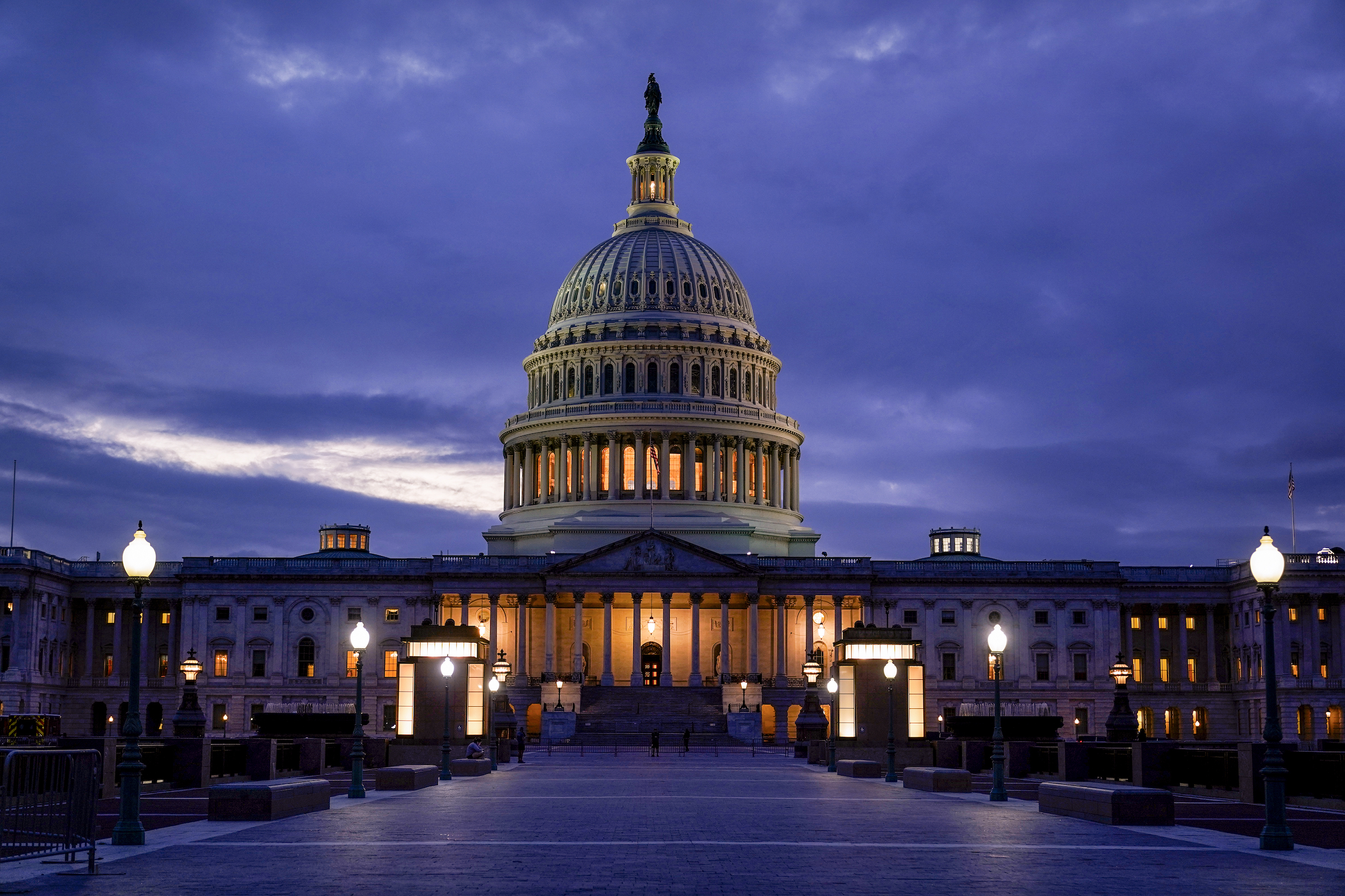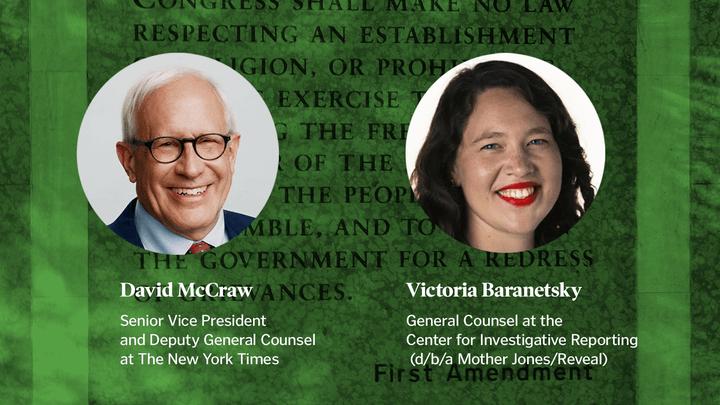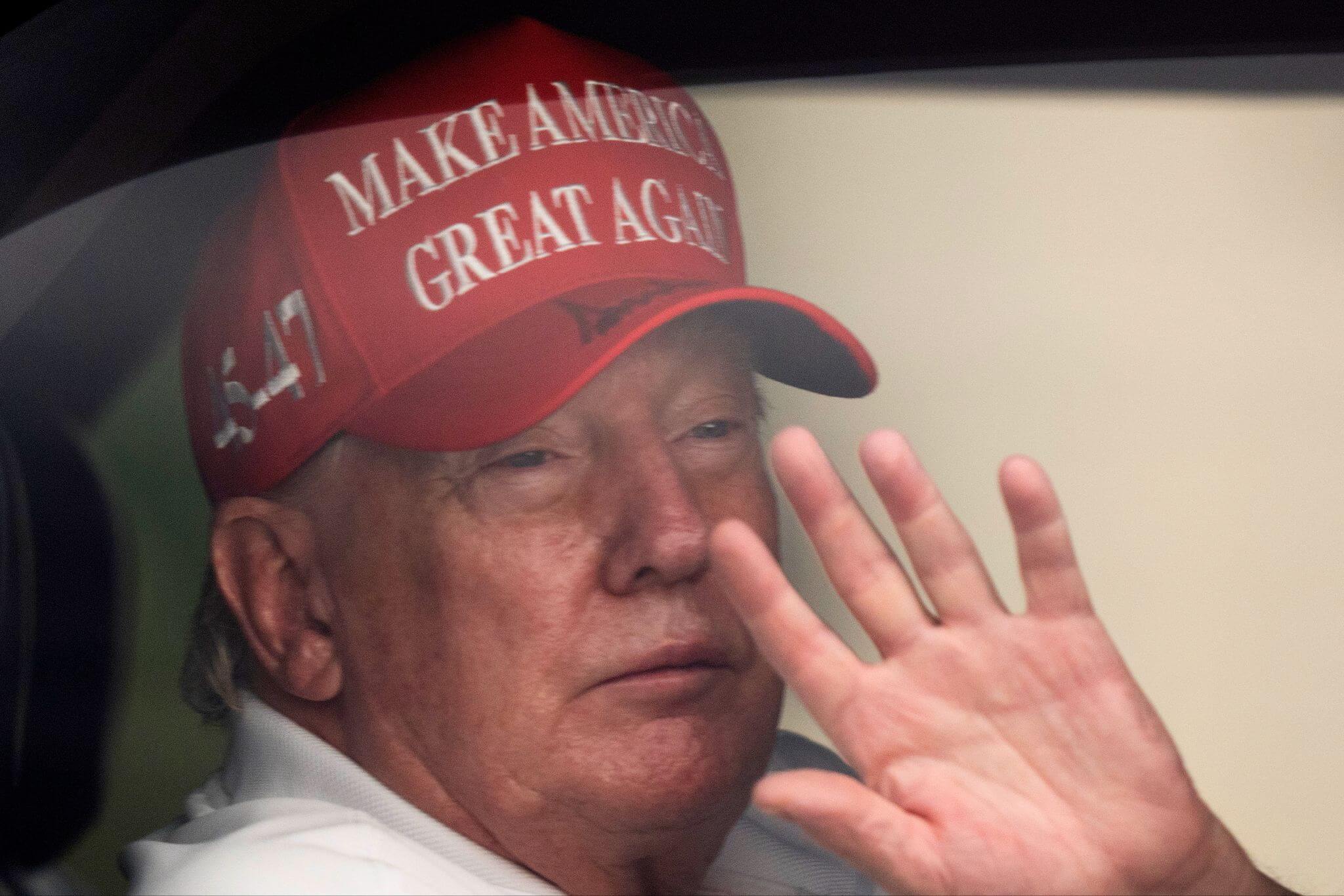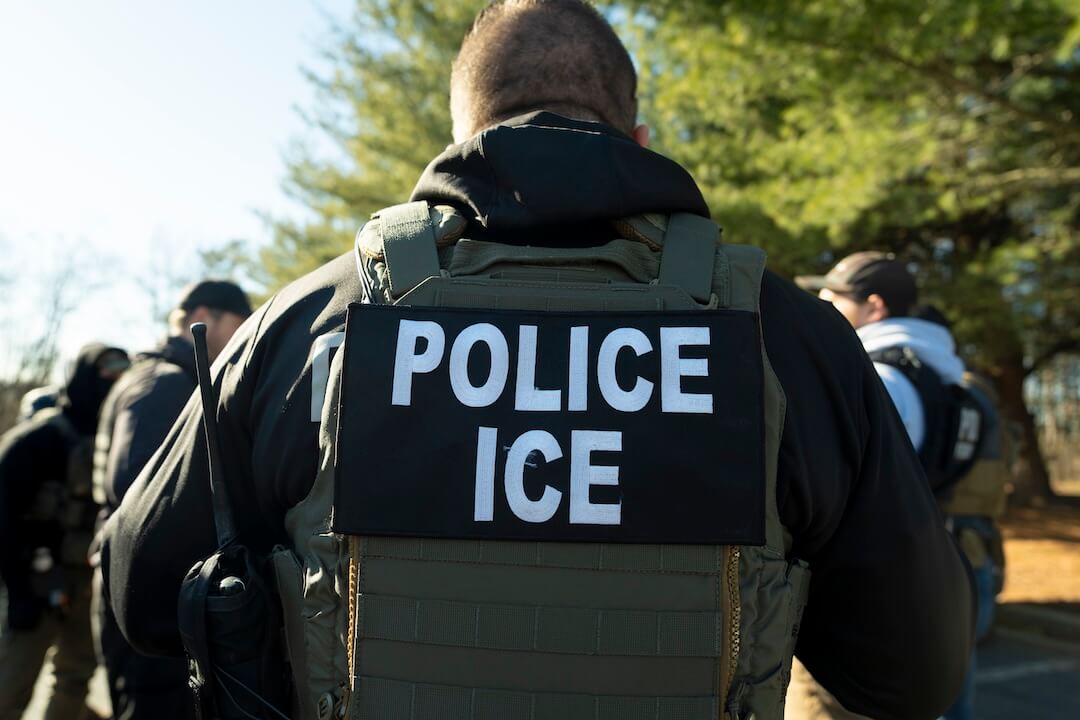
The Morning Meeting with Al Tompkins is a daily Poynter briefing of story ideas worth considering and other timely context for journalists, written by senior faculty Al Tompkins. Sign up here to have it delivered to your inbox every weekday morning.
You may have noticed #MallofAmerica trended on Twitter yesterday because of a video that got millions of views and sparked Jesus Goes to the Mall protests.
In the video, a man, who describes himself online as a “street preacher,” wears a bright green T-shirt with “Jesus Saves” on the front and “Jesus is the only way” on the back. Mall of America security asks him to remove his shirt or leave because, they said, a patron objected to the shirt.
People have reacted strongly to the video on social media, but there is a lot more to the story and the issue behind it: free speech in a shopping mall.
First, the shirt had messages on the front and back, but many media stories did not mention the message on the back.

(Paul Shoro, Facebook)
This is the symbol on the back of the shirt. The version on the shirt is crossed out.

The word “coexist” is designed so an Islamic crescent moon forms the C, a peace sign stands in for the O, the Hindu Om symbol replaces the E, a Star of David is the X, a pentacle represents the dot of the I, a yin-yang symbol is in place of the S, and a Christian cross is the T.
The graphic has a long history. It was designed by Polish graphic designer Piotr Młodożeniec for a 2000 international art competition sponsored by the Museum on the Seam for Dialogue, Understanding and Coexistence. The band U2 used the symbol while it played a politically themed song and frontman Bono wore a headband displaying the symbol.
In short, the symbolic meaning of the design is that people should get along. But the man’s T-shirt had that word crossed out and, at the bottom, had an added message: “(Jesus) is the only way.” Should a person have the right to wear a T-shirt saying religions should not coexist?
The man, Paul Shoro, is from Washington, D.C. He posts photos of himself holding up signs promoting Christianity and talking on a megaphone in front of shopping centers. The video does not tell us whether Shoro was street preaching in the mall, but he says in the video he was not. In an online interview, Shoro said he “goes there (to the mall) every day” and that he hands out literature and “preaches the gospel.”
Various protest groups responded to the online video of mall cops confronting him with promises of holding “Jesus Goes to the Mall” protests.
A mall spokesperson said in a statement, “The guest referenced in the video was approached by Mall of America security on January 7, 2023. … One week prior, he was issued a 24-hour trespass for soliciting guests. … After a brief interaction, the guest was not required to change his shirt and was allowed to remain at the Mall.” (Some media reported that he was “kicked out” of the mall.)
The Mall of America’s conduct policy says:
Conduct that is disorderly, disruptive or which interferes with or endangers business or guests is prohibited. Such conduct may include but is not limited to:
Loitering, engaging in soliciting, blocking storefronts, hallways, skyways, fire exits or escalators, or walking in groups in such a way as to inconvenience others
Picketing, demonstrating, soliciting, protesting or petitioning
The core issue is whether the First Amendment to the U.S. Constitution applies to a shopping mall as it would a public sidewalk. Can a shopping mall restrict what would otherwise be free speech? As we launch into the exploration, remember, the Constitution tells the government what it can and can’t do. And the Supreme Court took years to clarify how much a mall can restrict free speech and demonstrations.
Stretching back to 1946 (Marsh v. Alabama), the U.S. Supreme Court said free speech was protected on the streets in the business section of a company-owned town. In that case, Grace Marsh, a Jehovah’s Witness, attempted to distribute religious literature on the sidewalk near a post office in Chickasaw, Alabama. Later decisions would ask whether a mall is essentially a company-owned town.
The court spoke to the issue again in a 1968 case of Amalgamated Food Employees Union Local 590 v. Logan Valley Plaza, which said peaceful picketing in a parking lot adjacent to a mall was protected. The court was leaning toward saying that malls are like public property, like a town, and free speech should be allowed there just as it would be allowed on the streets of any city. But Justice Byron White wrote that a mall “is not a town but only a collection of stores. In no sense are any parts of the shopping center dedicated to the public for general purposes or the occupants of the plaza exercising official powers.” White said the mall invites the public to shop and that was the only invitation. But modern malls are much more than businesses under a roof. They host playgrounds and art shows and, like the Mall of America, some are more like theme parks.
The court addressed the issue again in Lloyd Corp. v. Tanner (1972), in which the court said malls are not like cities but instead are private businesses, and private property does not lose its private character even when it invites the public in to shop. From that point forward, malls have been able to regulate free speech, except when states step in.
State constitutions can and do offer different free speech protections in shopping malls. CCIM, the institute that designates Certified Commercial Investment Members, explains:
The majority of courts — including those in Arizona, Georgia, New York, Pennsylvania, and South Carolina — have interpreted the free-speech provisions of their state constitutions as providing the same but not broader protection than the First Amendment provides.
For example, the Arizona Court of Appeals held that the free-speech and initiative provisions of the Arizona Constitution did not protect the solicitation of signatures in privately owned malls for the recall of the then-governor in Fiesta Mall Venture v. Mecham Recall Comm. in 1988. In its decision, the court focused on its observation that, unlike a town or public center, a mall “concerns itself with only one facet of its patrons’ lives — how they spend their money.”
Many court decisions in these states also have noted that state funding of private development does not constitute sufficient state involvement to make the state constitution protections of free speech applicable.
For example, the Minnesota Supreme Court concluded (in 1998) that neither the presence of public financing alone nor public financing coupled with an invitation to the public to enter private property is sufficient to transform private property into public property for purposes of extending free-speech protection under the state’s constitution in Minnesota v. Wicklund.
In contrast, courts in California, Massachusetts, New Jersey, and Oregon have held that their state constitutions provide broader protection of free speech in shopping centers than the U.S. Constitution. However, the protection provided by these states still is limited in scope.
For example, in California, the state Supreme Court ruled in 1979 that free speech is protected even on private shopping center property because such places are gathering spots, not merely businesses. (See Robins v. Pruneyard Shopping Center.) The state court of California said the more a shopping center promotes itself as a gathering place, the greater the free speech rights it is implying.
This is not the first time the nation’s biggest mall has been caught in a free speech crossfire. In 2015, a judge ruled the mall could stop three Black Lives Matter protesters from demonstrating in the mall or on mall property. And, in 1999, some demonstrators who opposed fur sales made the argument that the mall is essentially a main street and that they should have free speech rights. The Minnesota Supreme Court disagreed and ruled the mall is private property and has the right to exclude.
Over the decades, public property has been defined as property the government owns, but even some government-owned property — for example, property where the business of government takes place, such as government office buildings, the White House or capital buildings — is not open to the public.
Since journalism and journalists lean into the First Amendment for the freedoms we need to do our work, it is worth taking time once in a while to explain how all rights can come with restrictions. They are not absolute rights. It is also worth exploring your state’s constitutional provisions for free speech.
This case also points out the importance of context. Many public media and news postings describe the man’s shirt as a “Jesus Saves” shirt without explaining the more controversial wording on the back. He had been warned before and readily admits he was handing out religious brochures and street preaching.
What the debt ceiling battle ahead could mean

The light in the cupola of the Capitol Dome is illuminated, in Washington, Wednesday, Oct. 6, 2021. (AP Photo/J. Scott Applewhite)
The federal government officially hits its debt limit tomorrow.
Most likely, Congress will pass “extraordinary measures” that will kick the issue down the road for several months. But a battle is coming. Since 1940, Congress has enacted 99 laws adjusting the federal debt limit, including eight times in the last decade.
The power to raise the debt limit is spelled out in The U.S. Constitution. Article I, section 8 authorizes Congress “to borrow Money on the credit of the United States.” The debt limit was created with the enactment of the Second Liberty Bond Act of 1917 (P.L. 63-43). Early on, the debt limit rose to finance America’s expenses in wars.
The Congressional Institute explains:
The debt limit is distinct from the Federal debt itself, which is the actual amount of money that the Government owes. Thus, the debt itself is usually lower than the debt limit. Increases in both the debt limit and debt are controversial since they invite accusations that either the Administration or the congressional majority (or both), regardless of party, are spendthrifts. Adjustments to the debt limit are also fraught since they raise the prospect that the Government will be unable to fulfill its financial obligations, which many economists warn would have disastrous effects on the economy.
We may be about to see what a battle could look like between a narrowly controlled GOP House and a Democrat-controlled Senate and presidency. The battle is over the vitally important U.S. debt ceiling and, as NBC News put it:
If they fail to resolve their differences and cause a default, the range of consequences includes a stock market crash, a recession, higher interest rates for consumers, a weaker dollar, a U.S. credit downgrade and a government unable to meet all its obligations, from funding the military to providing Social Security benefits.
The New York Times starts its reporting this way:
With days to go before the United States bumps up against a technical limit on how much debt it can issue, Wall Street analysts and political prognosticators are warning that a perennial source of partisan brinkmanship could finally tip into outright catastrophe in 2023.
The debt ceiling battles go back nearly a hundred years. The ceiling is the limit of $31.4 trillion on national debt that the federal government owes. Just like the limit on your credit cards, if the government hits its limit, it would not be able to borrow to meet obligations and the government would default on its debts. The Times explains how the government pays its debt:
The United States borrows huge sums of money by selling Treasury bonds to investors across the globe and uses those funds to pay existing financial obligations, including military salaries, safety net benefits and interest on the national debt. Once the United States hit the cap, Treasury can use “extraordinary measures” — suspending some investments and exchanging different types of debt — to try to stay beneath the cap for as long as possible. But eventually, the United States will need to either borrow more money to pay its bills or stop making good on its financial obligations, including possibly defaulting on its debt.
Responsibility for lifting or suspending the borrowing cap falls to Congress, which must get a simple majority in both the House and Senate to vote for any change to the debt limit. Raising the debt limit has become a perennial fight, with Republican lawmakers using it as leverage to try to force spending cuts.
When Republicans took control of the House of Representatives a couple of weeks ago, they adopted some new rules. One of those rules abolished the “Gephardt rule,” which allowed Congress to automatically increase the debt ceiling without voting on it. Imagine how voting for raising the debt ceiling would be used as ammo in attack ads during a campaign.
As the political drama over the debt limit plays out in Washington, keep your eyes on what analysts call the X Date, which will likely be in June. It’s when the government runs out of temporary options to keep paying its debt. The X Date would be the date that the government defaults on its debts without a new ceiling.
Learn more:
- Committee for Responsible Federal Budget
- Debt Limit “X Date” Further Out Than Expected, But Still Looms Ahead – Bipartisan Policy Center
- Debt Limit: Market Response to Recent Impasses Underscores Need to Consider Alternative Approaches – Government Accountability Office
- Possible Macroeconomic Effects of a Temporary Federal Debt Default – Federal Reserve
- Life After Default – White House Council of Economic Advisers








